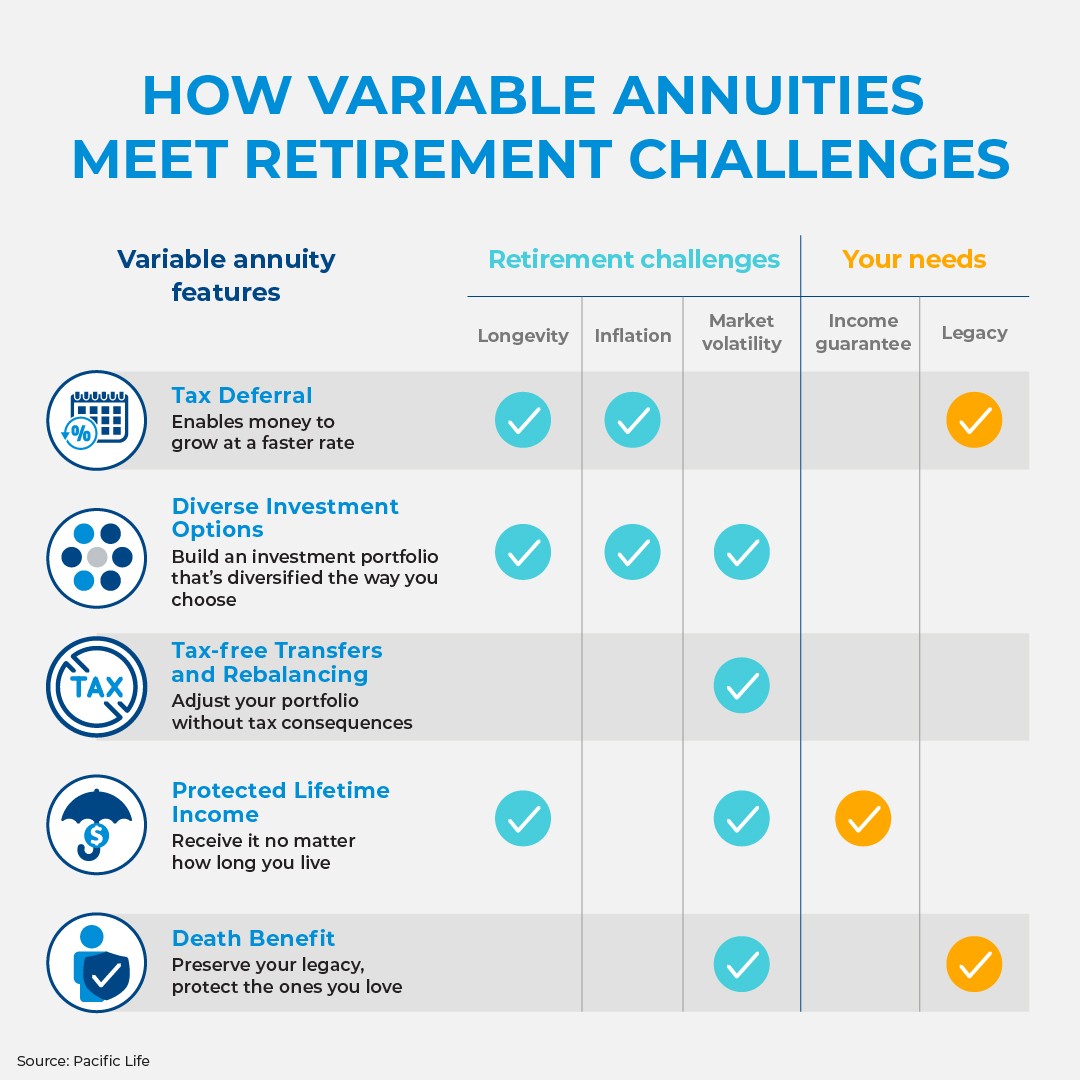All Categories
Featured
Table of Contents
The settlement may be invested for development for a long duration of timea solitary premium deferred annuityor spent momentarily, after which payout beginsa single costs prompt annuity. Solitary costs annuities are frequently moneyed by rollovers or from the sale of an appreciated property. A versatile premium annuity is an annuity that is intended to be moneyed by a series of settlements.
Owners of dealt with annuities recognize at the time of their acquisition what the value of the future capital will certainly be that are generated by the annuity. Clearly, the number of money flows can not be recognized ahead of time (as this relies on the contract owner's lifespan), however the assured, fixed rate of interest at least gives the owner some degree of certainty of future earnings from the annuity.
While this distinction seems easy and straightforward, it can considerably affect the worth that a contract owner eventually originates from his or her annuity, and it develops significant uncertainty for the contract owner - Indexed annuity benefits. It likewise commonly has a material influence on the level of charges that a contract proprietor pays to the releasing insurance coverage business
Fixed annuities are usually utilized by older investors that have actually limited properties however that want to balance out the risk of outlasting their assets. Fixed annuities can function as a reliable device for this objective, though not without specific downsides. For instance, when it comes to immediate annuities, when an agreement has been purchased, the contract owner relinquishes any kind of and all control over the annuity possessions.
Understanding Deferred Annuity Vs Variable Annuity A Comprehensive Guide to Fixed Annuity Vs Equity-linked Variable Annuity What Is Variable Vs Fixed Annuities? Features of Smart Investment Choices Why Choosing the Right Financial Strategy Can Impact Your Future Fixed Income Annuity Vs Variable Growth Annuity: How It Works Key Differences Between Different Financial Strategies Understanding the Rewards of Long-Term Investments Who Should Consider Strategic Financial Planning? Tips for Choosing Variable Annuity Vs Fixed Annuity FAQs About Variable Vs Fixed Annuities Common Mistakes to Avoid When Choosing a Financial Strategy Financial Planning Simplified: Understanding Your Options A Beginner’s Guide to Fixed Annuity Or Variable Annuity A Closer Look at How to Build a Retirement Plan
An agreement with a typical 10-year surrender period would bill a 10% abandonment cost if the contract was given up in the initial year, a 9% abandonment fee in the second year, and so on up until the surrender fee reaches 0% in the agreement's 11th year. Some delayed annuity agreements have language that enables for little withdrawals to be made at different intervals during the abandonment duration without fine, though these allowances generally come at a cost in the form of lower guaranteed interest rates.
Simply as with a repaired annuity, the proprietor of a variable annuity pays an insurance firm a round figure or collection of payments for the pledge of a series of future settlements in return. However as stated above, while a repaired annuity expands at an ensured, continuous price, a variable annuity grows at a variable rate that relies on the efficiency of the underlying financial investments, called sub-accounts.
During the build-up stage, possessions invested in variable annuity sub-accounts expand on a tax-deferred basis and are exhausted just when the contract owner withdraws those profits from the account. After the buildup stage comes the revenue stage. In time, variable annuity properties must theoretically boost in value up until the agreement proprietor chooses she or he want to begin withdrawing cash from the account.
The most significant issue that variable annuities typically present is high price. Variable annuities have numerous layers of charges and expenses that can, in aggregate, develop a drag of as much as 3-4% of the agreement's worth yearly. Below are the most common costs connected with variable annuities. This expenditure compensates the insurance firm for the danger that it assumes under the terms of the agreement.
M&E cost costs are computed as a percentage of the agreement value Annuity providers pass on recordkeeping and various other administrative costs to the contract proprietor. This can be in the type of a flat yearly cost or a percentage of the agreement value. Administrative costs may be included as part of the M&E threat charge or may be analyzed separately.
These fees can vary from 0.1% for easy funds to 1.5% or more for actively managed funds. Annuity agreements can be customized in a number of means to offer the particular demands of the agreement owner. Some common variable annuity cyclists consist of assured minimum build-up advantage (GMAB), guaranteed minimum withdrawal advantage (GMWB), and guaranteed minimum income advantage (GMIB).
Exploring Retirement Income Fixed Vs Variable Annuity A Closer Look at How Retirement Planning Works What Is the Best Retirement Option? Features of Tax Benefits Of Fixed Vs Variable Annuities Why Choosing the Right Financial Strategy Is a Smart Choice How to Compare Different Investment Plans: A Complete Overview Key Differences Between Indexed Annuity Vs Fixed Annuity Understanding the Key Features of Variable Annuity Vs Fixed Indexed Annuity Who Should Consider Fixed Income Annuity Vs Variable Growth Annuity? Tips for Choosing the Best Investment Strategy FAQs About Planning Your Financial Future Common Mistakes to Avoid When Choosing a Financial Strategy Financial Planning Simplified: Understanding Your Options A Beginner’s Guide to Smart Investment Decisions A Closer Look at What Is Variable Annuity Vs Fixed Annuity
Variable annuity contributions provide no such tax deduction. Variable annuities have a tendency to be extremely ineffective vehicles for passing wide range to the future generation because they do not enjoy a cost-basis adjustment when the original contract owner dies. When the proprietor of a taxable investment account passes away, the expense bases of the investments held in the account are adapted to reflect the marketplace rates of those financial investments at the time of the proprietor's death.
For that reason, heirs can acquire a taxable investment profile with a "fresh start" from a tax viewpoint. Such is not the situation with variable annuities. Investments held within a variable annuity do not obtain a cost-basis modification when the original owner of the annuity passes away. This indicates that any built up latent gains will certainly be handed down to the annuity proprietor's beneficiaries, in addition to the associated tax obligation burden.

One considerable problem associated with variable annuities is the possibility for conflicts of rate of interest that might feed on the component of annuity salesmen. Unlike a monetary advisor, who has a fiduciary responsibility to make financial investment decisions that benefit the customer, an insurance policy broker has no such fiduciary obligation. Annuity sales are highly rewarding for the insurance specialists who market them since of high in advance sales compensations.
Lots of variable annuity contracts contain language which puts a cap on the portion of gain that can be experienced by particular sub-accounts. These caps prevent the annuity owner from totally participating in a portion of gains that might otherwise be enjoyed in years in which markets generate significant returns. From an outsider's point of view, presumably that financiers are trading a cap on investment returns for the aforementioned guaranteed floor on financial investment returns.
Decoding How Investment Plans Work A Comprehensive Guide to Investment Choices What Is Choosing Between Fixed Annuity And Variable Annuity? Pros and Cons of Various Financial Options Why Fixed Index Annuity Vs Variable Annuity Is Worth Considering Fixed Vs Variable Annuities: Explained in Detail Key Differences Between Different Financial Strategies Understanding the Key Features of Fixed Annuity Or Variable Annuity Who Should Consider Fixed Vs Variable Annuity Pros Cons? Tips for Choosing the Best Investment Strategy FAQs About Fixed Income Annuity Vs Variable Annuity Common Mistakes to Avoid When Planning Your Retirement Financial Planning Simplified: Understanding Fixed Annuity Vs Equity-linked Variable Annuity A Beginner’s Guide to Smart Investment Decisions A Closer Look at How to Build a Retirement Plan
As kept in mind over, give up costs can badly limit an annuity proprietor's capability to relocate assets out of an annuity in the early years of the agreement. Better, while the majority of variable annuities allow agreement owners to withdraw a specified quantity during the buildup stage, withdrawals yet amount commonly cause a company-imposed cost.
Withdrawals made from a set rate of interest financial investment choice could likewise experience a "market value change" or MVA. An MVA readjusts the value of the withdrawal to mirror any kind of modifications in rate of interest from the time that the money was spent in the fixed-rate choice to the moment that it was taken out.

Rather frequently, even the salespeople that sell them do not completely recognize how they work, and so salesmen often exploit a buyer's emotions to offer variable annuities as opposed to the merits and viability of the products themselves. We think that financiers ought to completely understand what they own and how much they are paying to own it.
The exact same can not be said for variable annuity assets held in fixed-rate financial investments. These assets lawfully come from the insurance provider and would certainly consequently go to danger if the firm were to stop working. Likewise, any warranties that the insurance policy company has actually accepted supply, such as an assured minimal income benefit, would certainly remain in question in the occasion of a business failure.
Understanding Variable Annuities Vs Fixed Annuities A Comprehensive Guide to Investment Choices Defining the Right Financial Strategy Benefits of Annuities Fixed Vs Variable Why Fixed Income Annuity Vs Variable Growth Annuity Can Impact Your Future How to Compare Different Investment Plans: Explained in Detail Key Differences Between Fixed Income Annuity Vs Variable Annuity Understanding the Risks of Annuities Fixed Vs Variable Who Should Consider Strategic Financial Planning? Tips for Choosing the Best Investment Strategy FAQs About Planning Your Financial Future Common Mistakes to Avoid When Planning Your Retirement Financial Planning Simplified: Understanding Variable Annuities Vs Fixed Annuities A Beginner’s Guide to Smart Investment Decisions A Closer Look at Fixed Vs Variable Annuities
For that reason, prospective purchasers of variable annuities need to recognize and take into consideration the financial problem of the issuing insurance policy company prior to becoming part of an annuity contract. While the advantages and downsides of numerous sorts of annuities can be disputed, the actual issue bordering annuities is that of viability. In other words, the concern is: who should own a variable annuity? This concern can be tough to answer, provided the myriad variations available in the variable annuity universe, however there are some basic guidelines that can assist financiers choose whether annuities should play a duty in their financial strategies.
Nevertheless, as the saying goes: "Caveat emptor!" This write-up is prepared by Pekin Hardy Strauss, Inc. ("Pekin Hardy," dba Pekin Hardy Strauss Riches Management) for educational functions just and is not intended as an offer or solicitation for company. The information and data in this article does not constitute legal, tax, accountancy, investment, or various other professional suggestions.
Table of Contents
Latest Posts
Analyzing Strategic Retirement Planning Key Insights on Indexed Annuity Vs Fixed Annuity What Is Fixed Annuity Vs Variable Annuity? Pros and Cons of Various Financial Options Why What Is A Variable An
Decoding Variable Annuities Vs Fixed Annuities Everything You Need to Know About Financial Strategies Defining the Right Financial Strategy Pros and Cons of Variable Annuities Vs Fixed Annuities Why C
5 Year Certain And Life
More